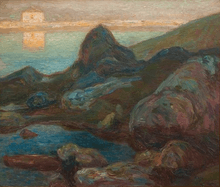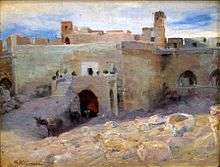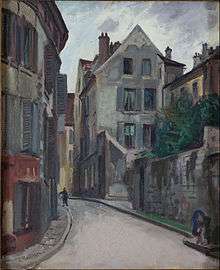Abraham Neumann



Abraham Neumann, a Jewish painter, was born in Sierpc, Poland, on February 6, 1873 and died in the Krakow Ghetto in June 4, 1942.
Background
In 1892, at the age of 19, he went to Warsaw to study painting and later, after being influenced by Hirszenberg, he decided to study in Kraków's Academy of Fine Arts.
Biography
In 1903, he studied in Paris at the Académie Julian. At that time, he also visited England, the Netherlands, Belgium, and Germany. In addition, he also spent time in Israel prior to its founding (British mandate in Palestine), and in the United States where traveled after the First World War. He taught at the Bezalel Academy of Art and Design in Jerusalem during the years 1925-1927. In 1909, he took part in an exhibition of paintings executed en plein air in Rybiniszki in the Polish Livonia [eastern Latvia]. He lived in Zakopane, Poland, Vienna, and Krakow.
His works consist of paintings of landscapes from the Tatra Mountains, Kazimierz Dolny, Brittany, Palestine, as well as portraits and still lives. He was the first Jewish painter from Poland to go to Palestine in 1904, and also the first to encounter the challenges posed to painting there, including the different kind of light. He struggled to solve these problems for a long time, and by his second journey to Israel (prior to its founding), local themes had become permanent characteristics in his work.
He belonged to the Krakow branch of the Polish Artists' Union and to the Association of Jewish Painters and Sculptors in Krakow. He participated in the "Sztuka" exhibitions, held individual exhibitions in Kraków and Lvov in Warsaw, Łódź, and Berlin. He also took part in the "Secession" exhibitions in Vienna and in 1916 he took part in the Jewish Art exhibitions in Warsaw.
| Wikimedia Commons has media related to Abraham Neumann. |
External links
- Neumann's works in Central Jewish Library